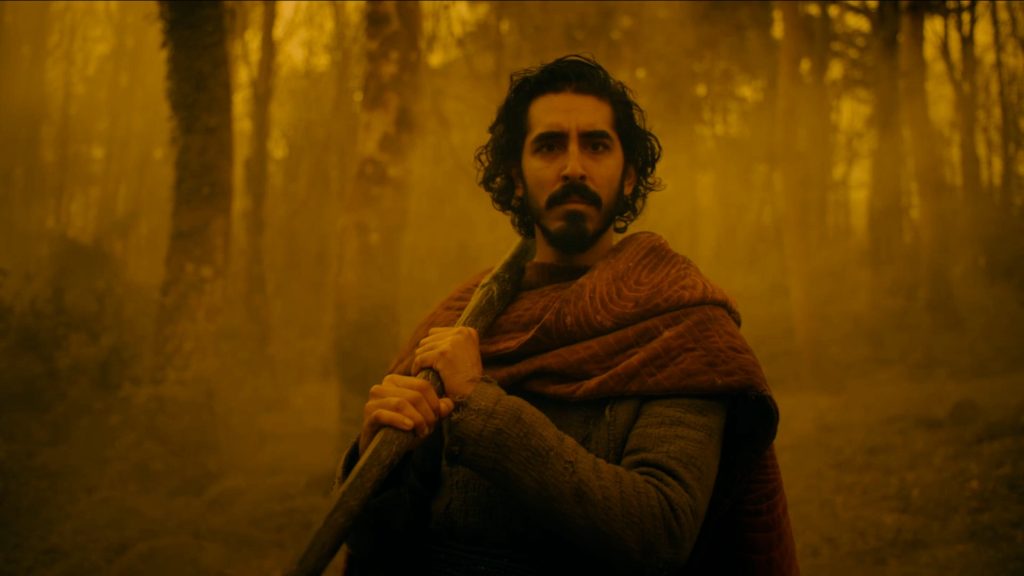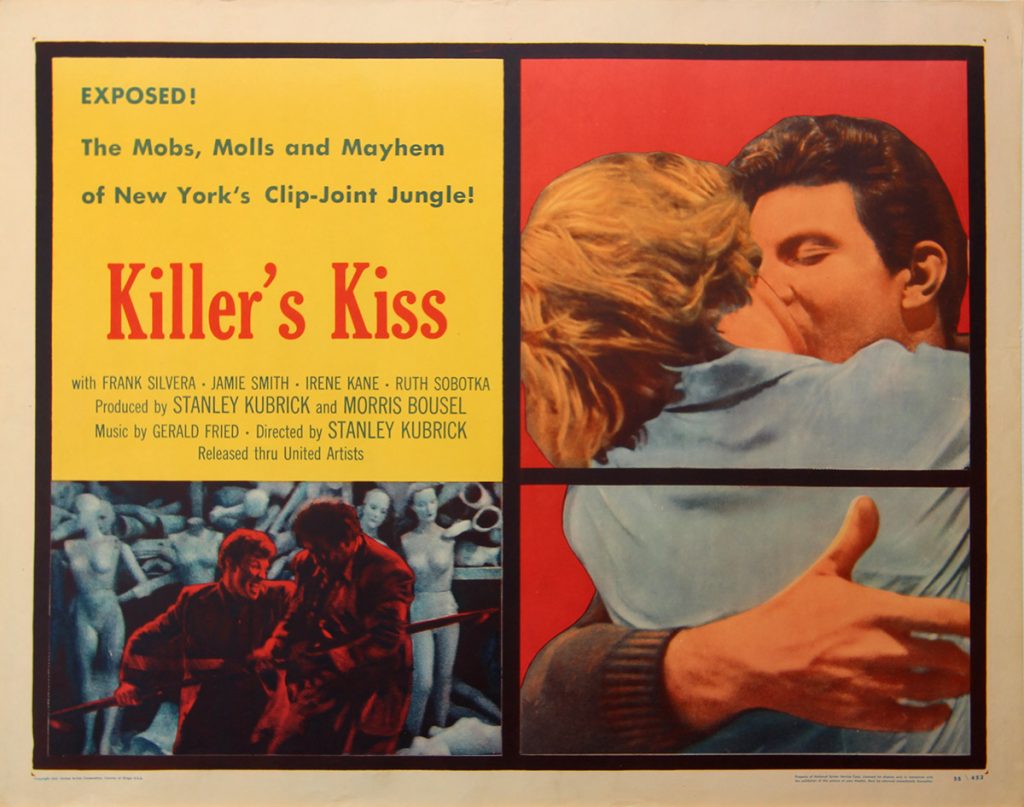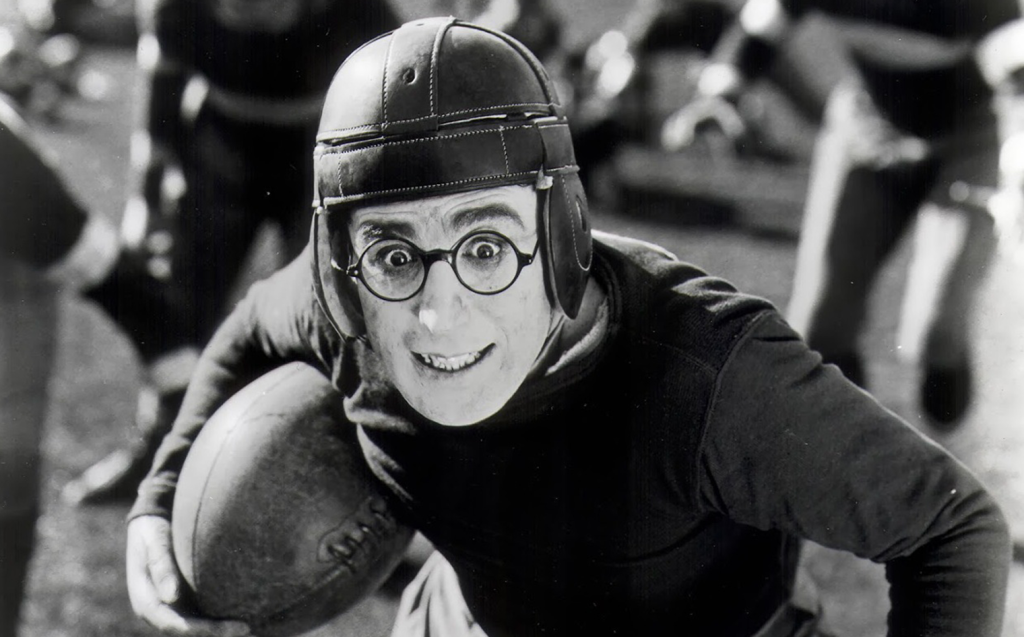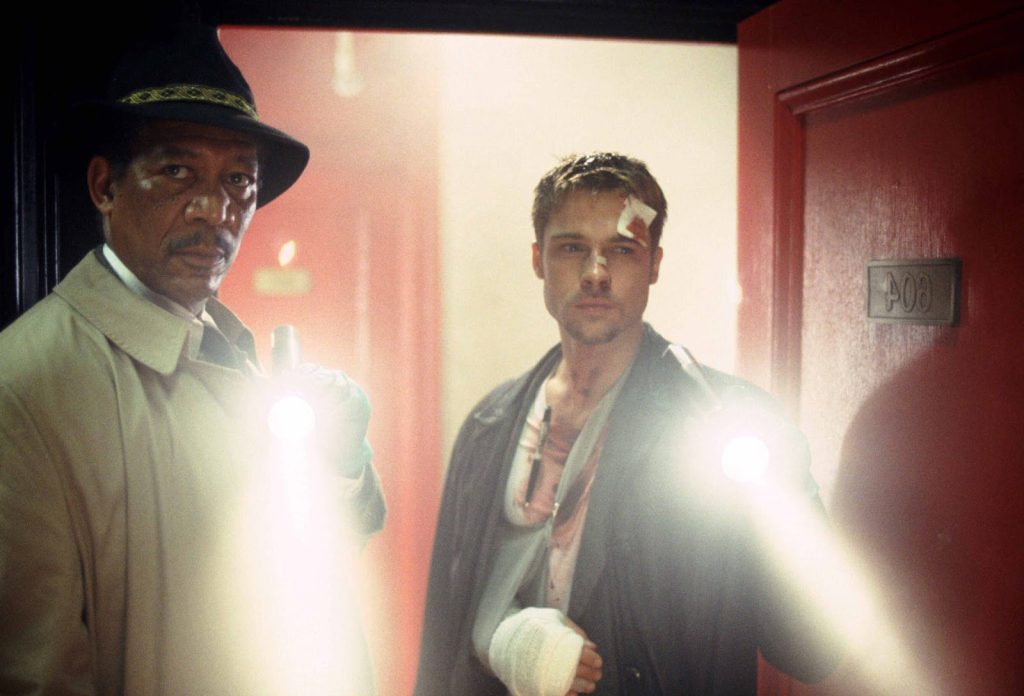This week, we’ll be focusing our posts on holiday movies, including several that we feel are worth putting into your holiday viewing rotation this year. Follow along here.
What the audience discovers through 2021’s The Green Knight is that director David Lowery is an artist especially equipped to work through the physicality of folklore, grounding mythic source material in the tangible experience of the body. His adaptation is an unexpected treatise on the brutality of aging and dying, and the convergence of both in the new year.
As a poem, Gawain and the Green Knight is insulated by anonymity, but the mystery of the original author only heightens the universality of its reflection on faith and honor. The story goes: at a New Year’s Eve feast, the court of King Arthur is confronted by the ominously non-human green knight. When Gawain, a recklessly ambitious young knight, beheads his opponent, Gawain does so under the promise that he will succumb to the same fate in years’ time. There is an exciting flexibility inherent to the text’s writing, not bound by an unyielding structure, instead achieving a specific sense of audience and speaker through alliteration, effectively imagining how the story would’ve been expressed conversationally.
Each couplet is governed by an internal rhyme, a style that carries the listener along on a wave of cyclical sound. The propulsive momentum of the story draws on the tragedy of time, gradually devolving into something frightening and imposing as the sentence develops: “a year slips by swiftly, never again returning; / the feelings at the outset and the ending are seldom in sync.”
Punctuation is uniquely embodied in the film, dividing the runtime into titled acts, with the year between Gawain and the green knight’s encounters spinning out effortlessly (literally, with the turn of a mural-decorated wheel). Lowery also channels the cadence of the poem by creatively intercutting scenes, with the timeline stretching and shrinking accordingly. Early on, Gawain is robbed by a group of scavengers, his journey held still against the robber’s binds. As he squirms along the forest bed, the camera pans 360 degrees across the thicket of trees bathed in grey twilight. When the camera settles on our protagonist again, he is ravaged by time, whittled down to barely armored bones. It is a patiently composed jump scare, a careful summation of tone. The ratcheting tension of this adventure story is upended by these musical interludes—verses on the harrowing nature of growing.

It is not incidental that The Green Knight, with its non-literal relationship to time, is set between Christmas and New Years, a moment in the calendar when hours, days and weeks are absorbed into the irregular scheduling of holiday life. Somewhat incongruously, Christmas is our final memory of the calendar year, frustratingly obscured by its uncommon busyness. Lowery colors this warped perspective on time-passing with an eerie greyness rather than a festive sparkle, imbuing the march towards Christmas with a horrible ease as Gawain prepares to face the otherworldly green knight. Lord (Joel Edgerton) summarizes this facet of the film in his addressal to Gawain: “You are at the end of your quest. A little sooner than you expected perhaps. But such is the case for us all.”
“Sooner,” and the slippery connotations therein, are what Lowery’s adaptation coils around. Dev Patel’s restrained, wide-eyed performance holds the fear of his oncoming quest with remarkable adeptness. Beneath the bravado there are seething rolls of childlike nerves. His version of Gawain is reckoning with the negative space around soon-ness that comprises its value, the expectation of later leaving him stranded in its potential.
There is a murkiness to Lowery’s lighting, shrouding the ongoing adventure in uneven darkness. Such a shadowy color palette draws on the structure and rigors of the day, while oncoming night is always clouding the edges of the frame. In the end, there is a balletic quality to the way the camera holds this light–the inky black trees imposing on him, driving him further into madness. The final 15 minutes unfold wordlessly, as Gawain’s plausible future plays out, one where he flees his responsibilities. He has a child, is crowned king, and beheaded in later life. Inevitability wraps around the audience, pulling them into the black hole of potential.
After the vision has played out, Gawain recognizes, somewhat cynically, that this quest will unfurl endlessly until death comes to claim him. Or as the text says: these events will persist— “continuing as in the past.” Were this film to follow a more traditional arc, it would betray the structural fluidity of the text, one where past and present collide, spelling out something tragic in its inevitability. Lowery’s The Green Knight embodies this truth with gruesome creativity. Gawain’s childish courage fades into a weathered grief, but the same flash of horrified recognition that catches in his eye before he is beheaded is one we recognize from early on.
“The Green Knight” is streaming on Amazon Prime Video.



